When using natural stone veneer, the amount of options available can be slightly overwhelming. Deciphering between different colors, patterns, and sizes can be a challenging process even for experienced members of the natural stone industry. To further your education on natural stone, this article is going to explain a key difference in the common patterns found throughout the United States. Some patterns utilize the face of the stone (stone face) and some are made from the inside of the stone (end grain).
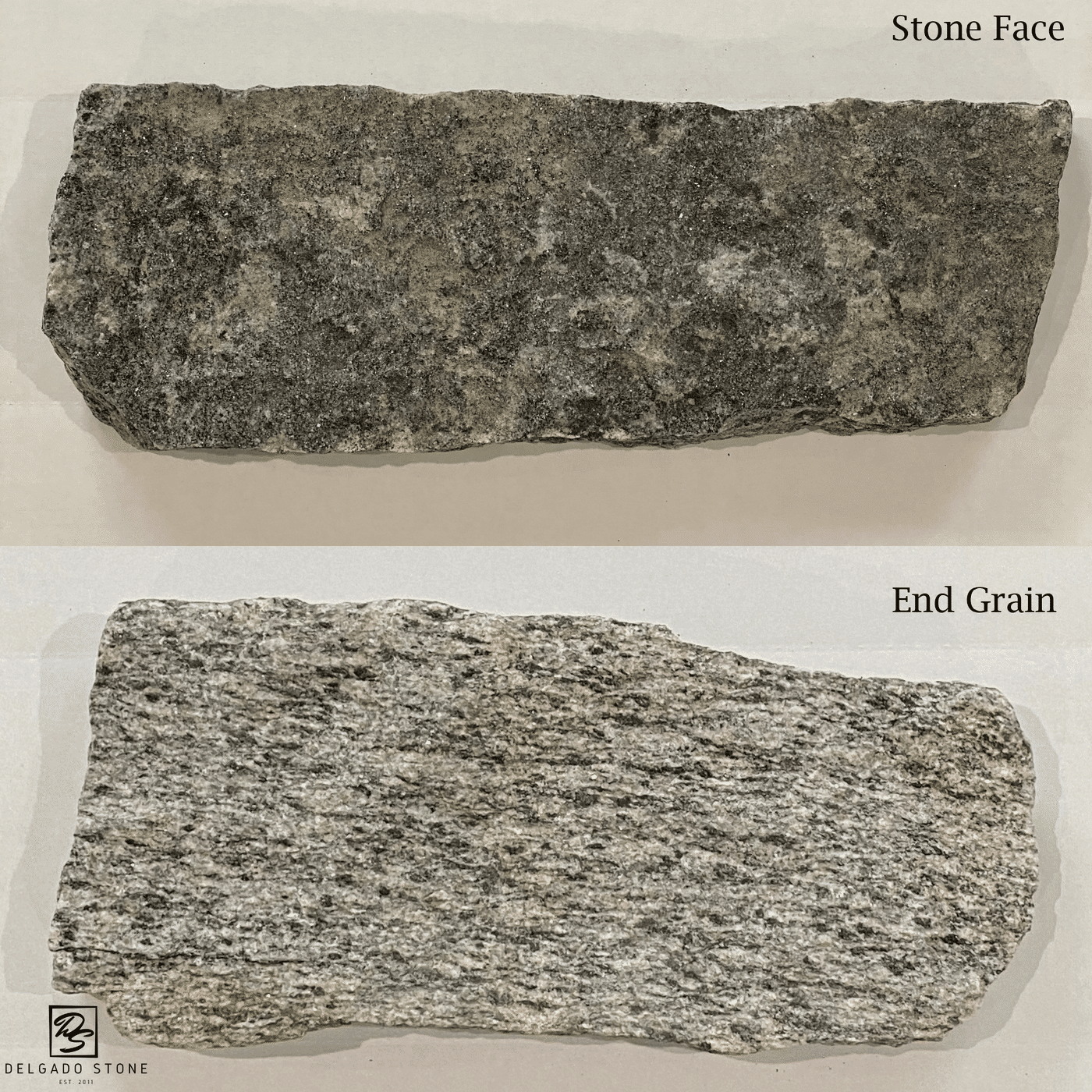
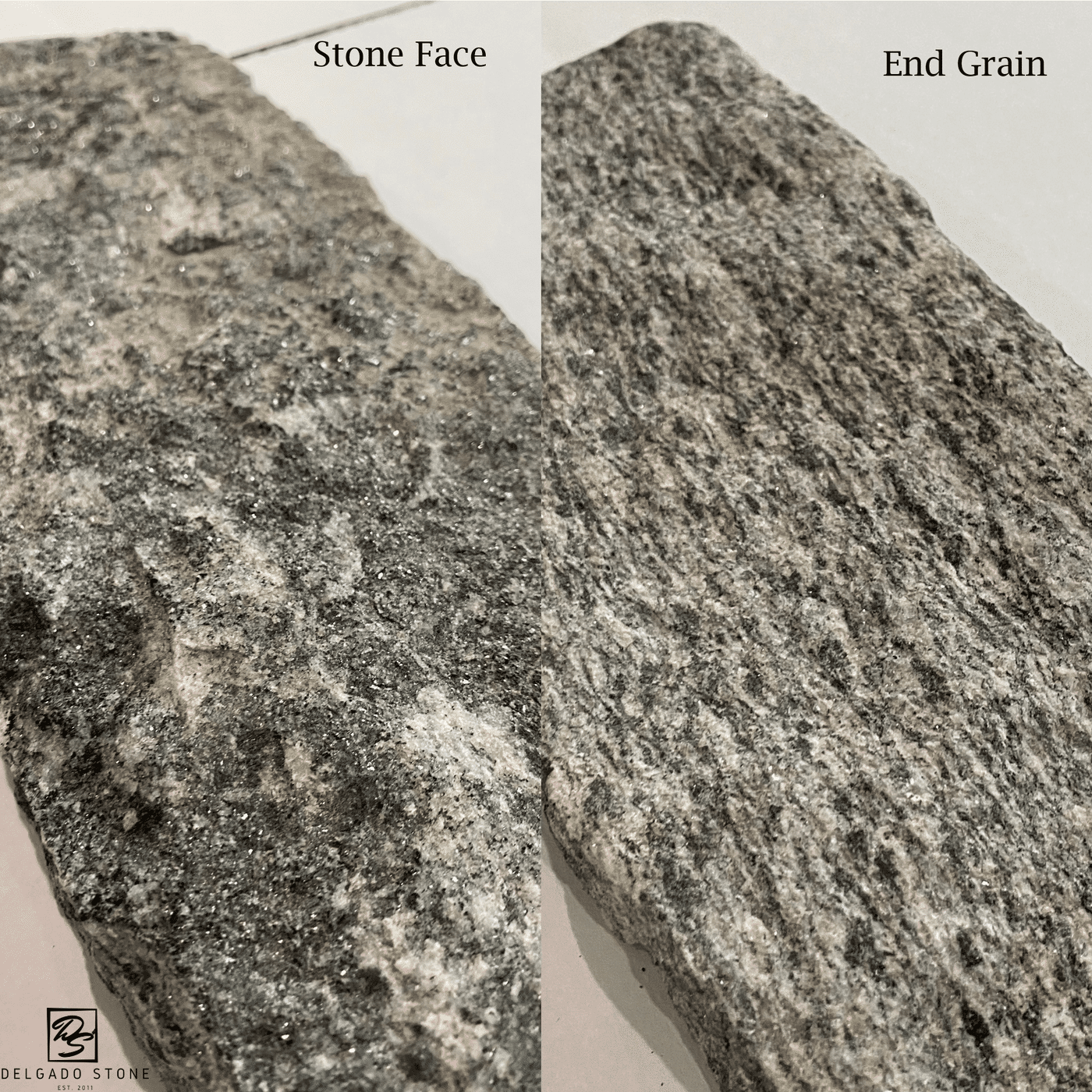
Texture Differences Between The Stone Face and End Grain
What is the Stone Face?
The stone face is the exterior exposed part of the stone. This part of the stone is what is visible when looking at a stone slab before it is split or manipulated in anyway. The stone face is split with the grain to create the following patterns: Square & Rectangle, Mosaic, and Strip.
What is the End Grain?
Where the stone face is the exterior layer of the stone, the end grain is the inside of the stone. This part of the stone is split against the grain which results in the changes in color and texture and is used to create the Ledge and Ashlar patterns. Check out this Instagram video of our splitter operator splitting a stone against the grain to expose the inside cut.
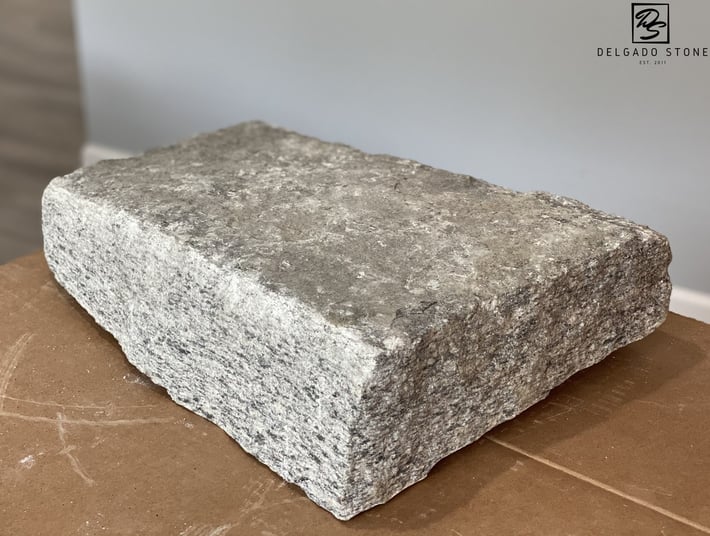
Greenwich Blue Square and Rectangle Full Bed.
The color difference between the end grain and stone face is one of the biggest differences. Seen above, the end grain on this piece of full bed veneer is visible on the rise of the stone and displays the end grain colors of Greenwich Blue which are white, grey, and blue. The top of this stone is the stone face which is what will be utilized when applying it. As you can see, the color of the stone face is more of a solid grey with little variation. There is a noticeably darker and more consistent look throughout the face compared to the end grain which has a wider range of colors. This color difference displayed between the stone face and end grain varies depending on the stone.
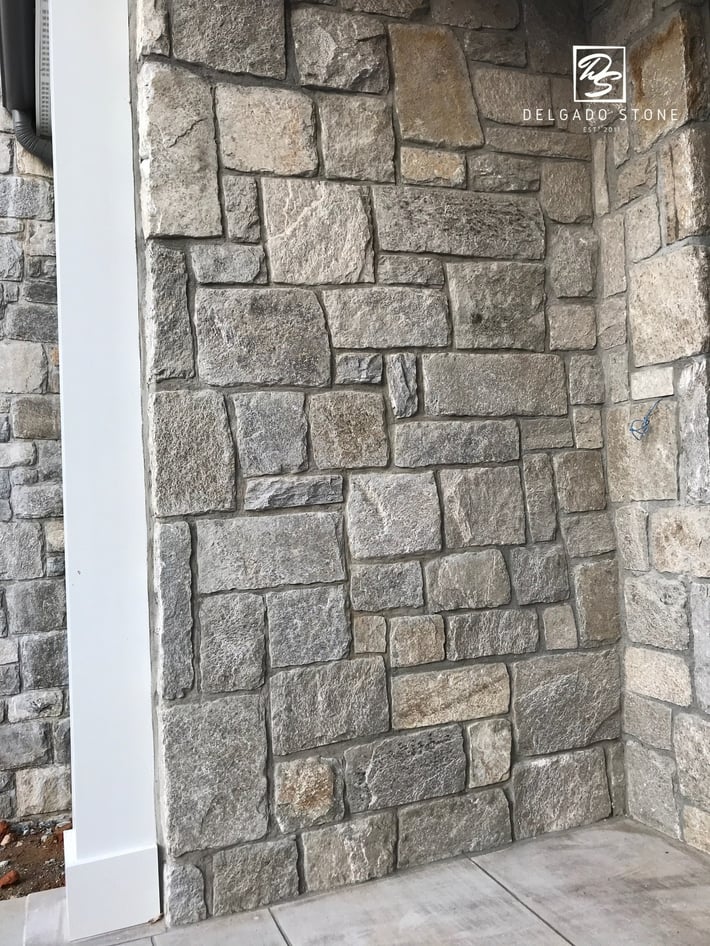
Harbor Mist Stone Face (Square and Rectangle)
The texture difference created during the production process is due to the way the stone is split. Going with the grain makes the splitting process easier and in turn makes a cleaner cut on the face of the stone. Seen above are pieces of Harbor Mist Square and Rectangle which were split with the grain, leaving a smoother texture. Splitting against the grain causes the ridging and texture seen below on this Harbor Mist Ledge stone wall.
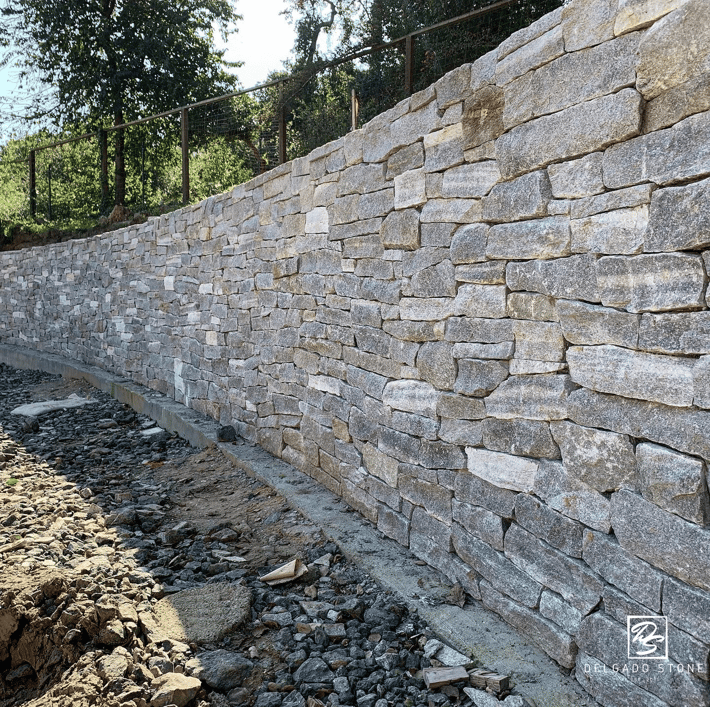
Harbor Mist End Grain (Ledge)




-2.png?width=150&height=150&name=Untitled%20design%20(2)-2.png)
COMMENTS